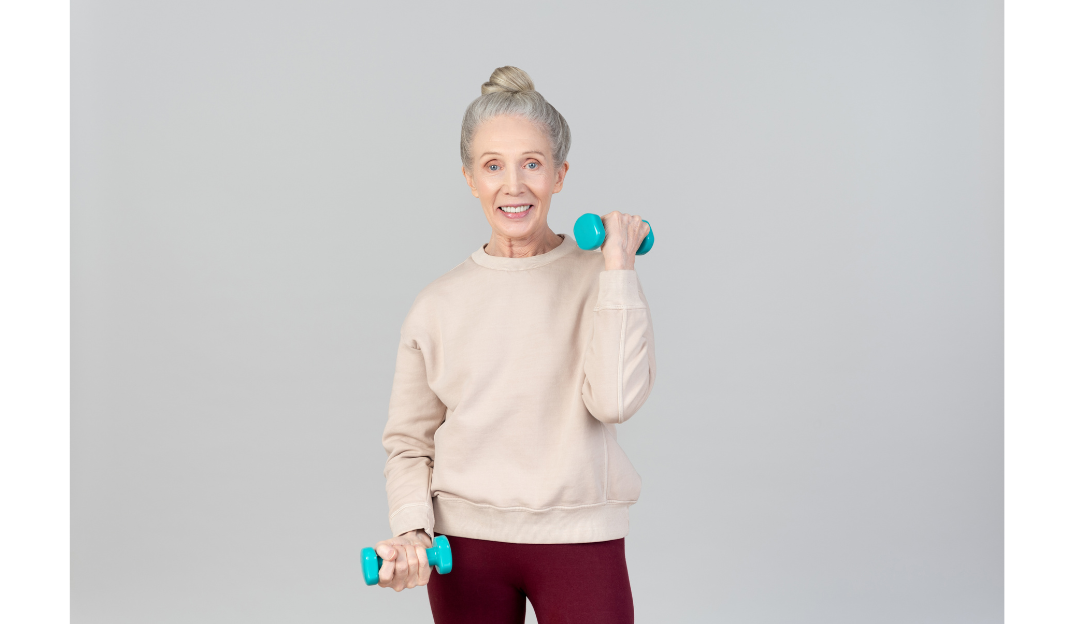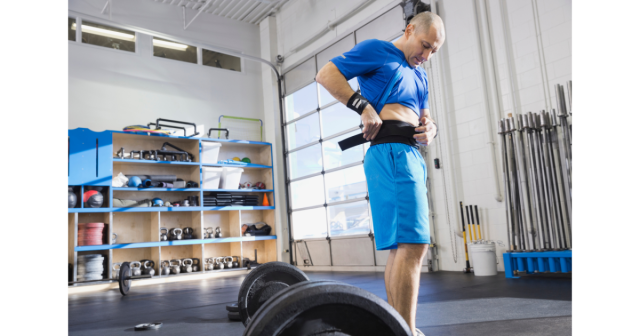Use It or Lose It – you’ve heard it said time and time again. But what are the benefits of weight training as we age.
I like to think I’m ‘young at heart’ but, even when my partner is still telling me to act my age rather than my shoe size*, there will come a point when I’ll have to accept that I am not Peter Pan and my body will succumb to the passage of time. Terrifyingly, the decline of muscle mass, otherwise known as sarcopenia (1), begins in your early 40s when your metabolic system slows down and becomes less efficient at absorbing and utilising nutrients essential for muscle growth, such as proteins (2). Getting older eventually means a loss of strength leading to a decline in physical performance and a lower quality of life.
A Silver Lining
AAAGH! BUT …. let me quickly mention the silver lining to this cloud … you CAN slow the decline if you remain active as you age. I’m heartened by the fact that I’m still achieving PBs in the amount I lift, proving that even as I mature I’m able to become stronger and fitter. My discovery is backed by many studies showing that resistance training, where muscles contract to lift a heavy object against the pull of gravity, actually increases muscle mass and function in older adults and new research has revealed that these benefits continue even for people of 85+ (3).
More specifically, a Danish study from the University of Copenhagen shows that weight training strengthens the connection between the nerves in the spinal cord and the muscles to maintain body functions well into later years (4). With people of all ages coming to me for training, I think it’s important to be seen as a life-long athlete who continues to improve and enjoy the journey, so I’m glad there’s science to prove I have years ahead of me yet!
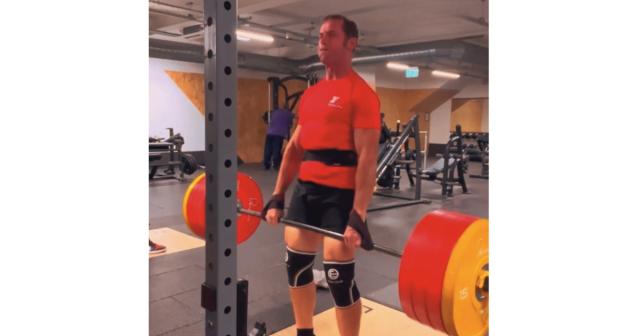
Use It or Lose It – there are many benefits of weight training as we age – PB lift at 54!
Bone Density
In conjunction with strengthening muscles, research also shows that weight-bearing exercise can enhance bone density (5). Weakened bones are linked to inactivity and hormonal changes as we age and can lead to chronic pain and decreased mobility. While women are more prone to Osteoporosis, a disease closely associated with changes in oestrogen levels at menopause where bones become porous, men are also at risk if they have low testosterone levels (6).
The National Osteoporosis Society advocates that bones stay strong if you work them as they will respond by renewing themselves. Bones are living tissues that benefit from impact exercise (eg.skipping or running) and resistance training with weights. The latter will cause muscles to pull on and strengthen bones and, as muscles get stronger, they will pull harder on bones and make them even stronger. In turn, posture and balance will improve and there will be a lower risk of falls (7).
It’s Never Too Late To Start
If you’re already lifting weights then rest assured you will be building up ‘reserves’ for the future. If you’re new to lifting, it’s never too late to start! Interestingly it has been found that when people take up weight training in later years, they not only gain strength, muscle mass and better mobility but also a renewed confidence in their physical abilities and improvements in mental sharpness and metabolic health, which in itself is a huge motivation (8) (9). Often the ‘go-to’ choices as we age include running, cycling or walking and, while these have their cardio-vascular benefits, it is more beneficial to combine these activities with resistance training, whether it’s free or machine weights or bodyweight exercises, such as push-ups, squats or yoga postures.
As Barb Nicklaus, Professor in gerontology and geriatric medicine advises (10):
“We all should think about how to build up a base of strong muscles to prepare for the loss of muscle and strength that we will experience as we age.”
NB: If you have never trained before, consult a health professional first and it is advisable to begin your training with advice from a qualified trainer.
While aiming to practise what I preach, I’m also mindful that I’m not superhuman. Hard to believe, but true! Of course I’m proud of how much I’m lifting now, but I know that to train life-long, it’s important to be realistic about my expectations and physical response to exercise and train accordingly. Remember that even professional athletes will reach a point where lifestyle changes or physical injury mean that adjustments must be made. I’m thinking of Roger Federer who gracefully bowed out of professional tennis when dogged with knee injuries at the age of 41 and Olympic cyclist Dame Laura Kenny’s recent decision to step back from competition aged 31 to spend more time with her family. When your fitness goals and expectations change, it’s time to review how to approach exercise to avoid injury and maintain a regular fitness programme.
How to stay strong and moving:
Wear the right gear
As well as thinking about comfortable sweat-wicking vests, shorts and leggings, do spare a thought for your footwear. Crossfit shoes designed for gym work will provide support, stability and protection for your feet, ankles and knees by preventing pronation and supination (inward and outward rolling of the foot). Running shoes are not ideal for weight training because they lack the stability and support needed for lifting heavy weights effectively. Even better are weight lifting shoes. Weightlifting shoes offer optimal stability, support, and elevated heels, enhancing lifting performance and reducing injury risk during weight training.
(Some good Crossfit gym trainers: Reebok Nano X4, Nike Metcon 9, Nov-8 F-Lite G300)
Warm up and dynamically stretch before exercise and cool down and static stretch after
To increase heart rate and blood flow before lifting, increase mobility through dynamic stretches and add 5-10 minutes of light cardio work, perhaps on a bike, treadmill or rower. Then take time with your cool down and make sure you stretch with static stretches holding for around 30 seconds per stretch.
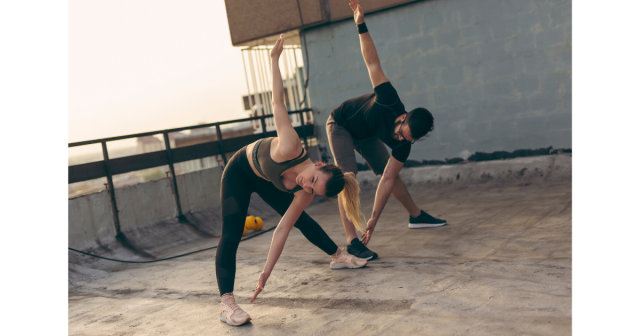
Dynamic stretching best before training. Improves flexibility, power output and neuromuscular activation
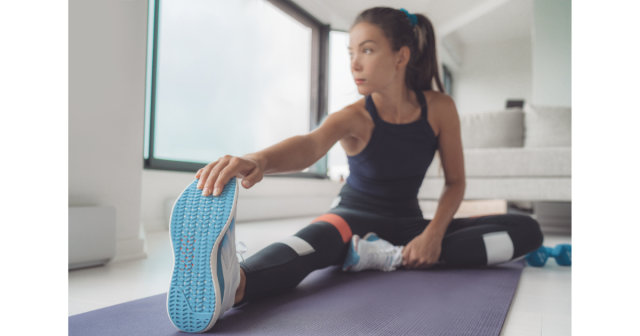
Static stretching best after training. Improves range of movement, flexibility and helps with muscle recovery
Focus on form and technique
Make sure you are focusing on the right muscles for the intended resistance training – rather than risk injury do seek professional advice if you are unsure.
Start with lighter weights and set realistic goals
From experience I’ve found that starting someone new to lifting with heavy strength weights is likely to cause injury, so with new clients I prefer to ‘periodise’ the programme to allow new muscle to be gained before strength training can begin. Periodisation means alternating between periods of ‘hypertrophy’, where weights are lighter to allow muscles, tendons, ligaments and bones to adapt to the load, and periods of strength, where weights are gradually increased over time. I tend to advise 2 months of hypertrophy before moving clients to strength for a block of 2 months and then back to hypertrophy to build more muscle. The benefits to be gained from the two periods are interconnected because when you train for hypertrophy the resulting increase in muscular size can increase your strength and, when you train for strength, the ability to perform a task for longer can lead to hypertrophy (11).
Allow time to rest between sets
For hypertrophy rest between sets should be between 30 and 60 seconds, any longer than this may prevent hypertrophy from occurring. Using this rest interval between sets creates high lactate levels in the exercising muscles. This forces the body to improve its ability to buffer the accumulating lactate, thereby improving your ability to sustain moderate, near maximal or maximal contractions over a given time period. High volume, short rest period training has also been found to increase human growth hormone levels which leads to muscle growth.
For strength training the rest period between sets should be between 3 to 5 minutes to recover enough to achieve the necessary intensity to gain strength (11). This long rest enables your phosphagen levels (energy required for short powerful movements) to recover. Full recovery also allows you to produce the greatest muscular force possible for each set performed with better technique, and thus receive the greatest absolute strength gains from your training. Another good reason for this rest interval is that when combined with heavy training loads, it appears to produce greater testosterone levels incorporating large muscle group exercises in the training. A higher testosterone level equates to greater gains in strength.
Use a weightlifting belt
If you have back issues a weightlifting belt will provide support and stability by redistributing force more evenly throughout your core to reduce risk of injury. Weightlifting belts create intra-abdominal pressure, giving your spine more stability during those intense lifts. This pressure helps reduce the risk of back injuries and hernias, making your lifting sessions safer and more confident.
However, if you don’t suffer from back issues, you should start wearing a lifting belt when you’re lifting heavy weights close to your maximum capacity, especially during compound exercises like squats and deadlifts. It’s essential first to develop proper form and core strength. The belt is meant to enhance stability and support, not compensate for weak fundamentals.
Listen to your body
Pay attention to how your body feels and if you feel any pain or discomfort it is better to stop exercising. If pain continues following rest, consult a health professional. Unfortunately the recovery process becomes longer as you get older and prevention is key.
Here are my top 15 tips to stay motivated for life:
- Keep it fresh by varying your workout and constantly surprising and challenging your body.
- Become an early bird – get up and exercise before you have time to think of why not to.
- Leave your training clothes out at night to slip straight into when you wake.
- Treat yourself to some new kit, training shoes or a new fitness tracker.
- Vary where you train – gym / outdoor park equipment / bootcamp / bodyweight circuit at home.
- Be social – train with a friend or PT / join a running club or fitness class.
- Be with people who motivate you and who you can laugh with.
- Take up a new sport eg. learn to paddleboard or surf.
- Download your favourite playlist or podcast to enjoy while you work out.
- Think of how great you’ll feel after your workout.
- Think of how bad you’ll feel if you don’t work out.
- Plan to pick up a good coffee on the way home from your workout (decaf if after 12pm).
- Map the days you plan to train in your diary and make time for it.
- Know when it’s okay to take a day off training without guilt.
- Increase your protein on lifting days to enhance muscle/strength gains and recovery.
* (UK or European?!)
- Sarcopenia in older adults
- Safe weightlifting for seniors
- Muscle mass and strength gains following resistance exercise training in older adults 65–75 years and older adults above 85 years
- Are you aged 40 or over? In that case, you need to do heavy weight training to keep fit
- Bone density and weight-bearing exercise
- Osteoporosis – causes
- Exercise for bones
- Why lifting weights can be so potent for aging well
- Motivational characteristics and resistance training in older adults: A randomised controlled trial and 1-year follow-up
- How can strength training build healthier bodies as we age?
- Hypertrophy training versus strength training

